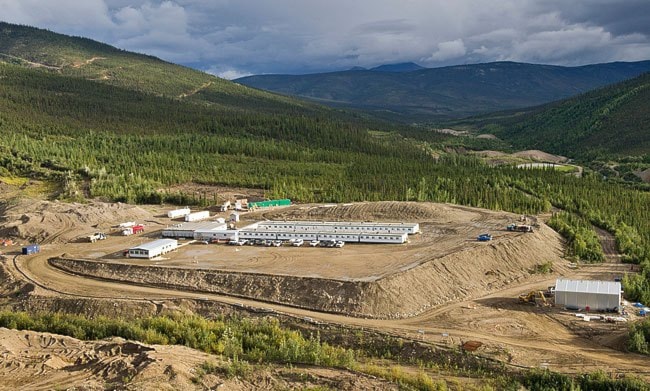Victoria Gold is one important step closer to opening the Yukon’s next hardrock gold mine.
Yukon Premier Darrell Pasloski announced on Monday that the government has accepted the Yukon Environmental and Socio-Economic Assessment Board’s recommendation to give the go-ahead to the company’s Eagle gold project near Mayo.
“This investment in the economy would be significant,” Pasloski said. “The total investment described is somewhere between $400 million and $450 million in capital investment in the Yukon. I think this is great news for Yukon but also for the community, and the people who live in Mayo.”
Victoria Gold president John McConnell said while the company is happy about the decision, it wasn’t a big surprise.
“Well, yeah. It’s another milestone along the way,” McConnell said. “Once YESAB had made their recommendations, we were all pretty confident that the government would accept them.”
The YESAB recommendations, which the government accepted in full, came with 123 terms and conditions, mostly related to water protection and the handling of cyanide, which will be used in the gold extraction process.
“We don’t see any of them as major challenges. It’s all just good work practice, actually. A lot of them have to do with the handling of cyanide and the building of dams, but it’s all just good principles. There’s nothing there that surprised us, nothing that keeps me up at night,” he said.
The next step for the company is to obtain a quartz mining and water licence. That process should take about two months, allowing Victoria Gold to begin construction sometime early this summer, said McConnell.
The mine will employ about 400 people during the two-year construction process, and around the same number once it goes into production, expected by 2015.
Victoria Gold has a benefit agreement with the Nacho Nyak Dun that will help the First Nation reap some of the benefits from the mine, which will occupy part of their traditional territory.
“It’s an agreement we actually negotiated 18 months ago, now. You know, there are things like employment, business opportunities, and training, all of those things so that the Nacho Nyak Dun get the most benefit from the mining operation,” McConnell said.
It’s estimated that Eagle will use up almost 100 gigawatt-hours of electricity, but there appears to be some confusion over where that power will come from.
The original plan was to tie Eagle into the territorial power grid. But Pasloski said there is now a second option on the table: having the mine generate its own power by burning diesel, or possibly a diesel-natural gas mix.
“Those two options are still on the table and being discussed by the company and officials as well. I can’t speculate on what exactly will be the requirements and how it will be looked at. I know that energy requirements is something that both the Victoria Gold and officials are working on to see what is the best solution for the mine and for the ratepayers, the taxpayers and citizens of Yukon,” Pasloski said.
But according to McConnell, the company has no plans to generate its own power.
“No, it’s still our intention to tie into the grid. We’re actually not permitted to have our own power system, so we’re working very closely with Yukon Energy Corporation to tie into the grid and have them provide power,” McConnell said.
Victoria Gold is also still seeking to nail down some investment to get construction started.
“We’re a long way down the road, and we’re working with a syndicate of banks,” McConnell said.
“That’s going very well, and I would expect we’ll be making some announcements before the end of June on project debt financing. There is a host of things we’re looking at, and it’s all going quite well, despite current capital markets,” he said.
The Eagle gold mine is located 85 kilometres northeast of Mayo. It is expected to operate for eight years, but as often happens with Yukon mines, the company has been finding more deposits that could allow it to run for much longer.
Eagle has 2.3 million ounces of probable gold reserves, and is expecting to produce around 212,000 ounces per year in its first five years.
Contact Jesse Winter at
jessew@yukon-news.com
